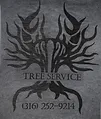How To Choose the Right Wichita Tree Service
Factors like services and licensing are important considerations when choosing a tree removal company. We describe several of these key factors below.
Vet the Company's Qualifications
Make sure that your tree service provider holds insurance, such as general liability, professional liability, and workers' compensation insurance. Insurance policies serve to protect both workers and customers. Your company's policy should specifically mention tree work coverage; otherwise, you may be liable for any injuries or damage on your property. There are no mandatory national certifications for tree removal, but a company may have a certified arborist on staff to perform inspections. This isn't required but does provide added benefits. Arborists are certified by the International Society of Arboriculture (ISA). They're trained in proper preservation, care, and maintenance techniques to protect tree health.
Get Quotes From Multiple Companies
We recommend sourcing quotes from several companies to discover the best deal. This way, you can compare aspects like service fees, timelines, and included services.
Confirm the Company Performs Residential Tree Services
Residential tree removal companies have fewer restrictions than commercial ones. Commercial tree companies work on large commercial properties and are required to follow certain city ordinances. For this reason, we recommend looking for a company that specializes in residential tree services.
Request a Tree Risk Assessment
A tree risk assessment (TRA) determines the likelihood of a tree breaking by examining the tree and its branches. This breaking is referred to as tree failure. Evaluating tree failure helps service companies decide the best ways to minimize the danger to workers and property. Certified arborists typically conduct TRAs. Sometimes these services are offered for free, while other times, there's an additional fee. Contact your tree removal company and ensure you have a TRA completed before beginning work.
Ask About Stump Removal
Many tree removal companies can also handle stump removal, either by hand or with specialized equipment. This is important because neglected stumps will decay and attract disease and pests. Ask your tree removal company if it includes stump removal with its services. It typically costs from $65 to $473, with the typical Wichita homeowner paying around $301.
How Much Does It Cost To Remove A Tree?
Tree removal services cost, on average, $602, with a range of $293-$1,291. Factors that might affect the price include tree health, project size, and tree size and type. You may pay by acre instead of by tree if multiple trees need to be removed. You can expect to pay about $1,549 for emergency tree removal services. The price will also increase if your tress have high failure risk or require additional labor, safety precautions, or equipment.
Ready to Get a Quote on Your Tree Project?
Please enter a valid 5-digit zip code!
Frequently Asked Questions About Tree Removal in Wichita
What are common tree issues?
How are tree trimming and tree pruning different?
How can I tell if a tree is dangerous?
Do I need to hire a professional for tree removal?
Is it okay to leave a downed tree on my lawn?
To share feedback or ask a question about this article, send a note to our Reviews Team at reviewsteam@thisoldhousereviews.com.













